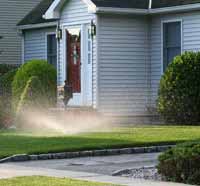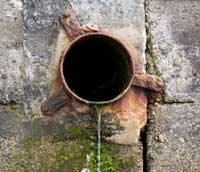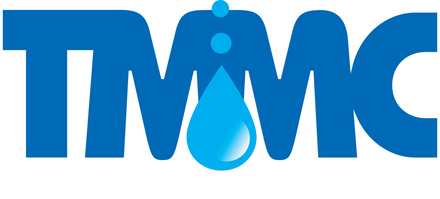Concrete, like the majority of building materials, constantly interacts with the conditions around it.
Temperature, humidity, and other factors all have an impact on the internal moisture levels in concrete – even when it has been deemed “dry” or has been successfully finished with a flooring or sealant.
Problems can occur when external sources of moisture cause a rise in the internal moisture conditions of a concrete slab. Unfortunately, these problems are not always visible until they have made themselves known through a significant moisture-related problem like staining, blistering, flooring failure, mildew or more. Knowing internal relative humidity (RH) levels is crucial, particularly when it’s being affected by an external source.
Outside Sources of Concrete Moisture
-
Leaking Water Sources:
Sprinklers, appliances, plumbing…anywhere that water is directed through or near a slab can be a prime source of excess moisture in a concrete slab if a break or damage to the pipes occurs. Undetected leaks from these sources can cause significant moisture-related damage. If localized water intrusion combines with extreme temperature changes (i.e. seasonal variance freeze/thaw cycles, or an uncontrolled building environment), it can aggravate cracking, flaking, scaling or other cosmetic and structural flaws.

- Groundwater: In any building structure, groundwater, either because of a high water table or the natural moisture levels of the surrounding grade, can become a source of slab moisture, particularly if no vapor retarder was installed. Anywhere that the ground is in contact with the concrete can become a point of possible moisture intrusion. It’s also possible for the moisture from external sources like groundwater to migrate through the slab, causing adhesive failure, mold or mildew growth, or other moisture-related problems on the opposite slab surface.
- Inadequate Grade: Natural moisture runoff from rain, snow, sprinklers, and more can be exacerbated if the grade next to the structure slopes towards the building instead of directing that moisture away from the building. Even suspended concrete systems can be affected if moisture is able to wick up through the materials in contact with the moisture at grade level. Extra measures like zero-permeable vapor barriers, external sealants, drainage systems, sump pumps or landscaping should be considered if the grade is contributing to moisture problems.
- Poor Drainage:Directly connected to ground water and grade, adequate drainage is vital to removing excess water from contact with any concrete system. If drainage is not designed to handle the levels of moisture that surround a building, it can result in pooling or overflow that will ultimately be detrimental to the concrete and the building materials in contact with it. Obviously, this is best addressed during design and construction, but sometimes settling can occur, causing the drainage system to fail.
- Condensation: If the difference between the temperature of a concrete slab and its surrounding air is significant, and the temperature and moisture level of the slab are below the dew point of its surroundings, moisture will collect on the concrete surface and be slowly absorbed. If this compounds with chemical interaction with the concrete’s mix components, it can also lead to scaling or micro-cracks in the slab surface.
- High Ambient RH: Even the internal conditions of a building space are really external to the slab and can become a source of extra moisture in it. When the air within a building space carries more moisture (humidity) than the level within the concrete, the slab will absorb moisture from the surrounding air until it reaches equilibrium (in this case, an RH balance) with its surroundings. If conditions in the building enclosure must operate at high humidity levels, then a water-resistant sealant or flooring finish should be applied to the concrete to minimize the moisture movement into and out of the concrete.

Internal RH
Regular moisture testing can help to pinpoint possible sources of external moisture. Surfaced-based tools like concrete moisture meters or building inspection meters can be a vital part of any concrete maintenance routine but are not capable of addressing the degree of water intrusion from external sources.
Only RH testing can provide a true picture of the internal moisture conditions of a concrete slab. If an external moisture source is suspected, RH testing can indicate the level of water intrusion by accurately measuring the internal moisture level of the slab. RH testing can also confirm when repairs have successfully corrected a water intrusion problem from an external source. Because RH testing reads from within the slab, elevated moisture levels can be identified and localized for better problem solving.
Being aware of potential external sources of concrete moisture can improve maintenance over the life of a concrete slab. RH testing can confirm what may not be visible with the casual glance.
| |
Jason has 20+ years’ experience in sales and sales management in a spectrum of industries and has successfully launched a variety of products to the market, including the original Rapid RH® concrete moisture tests. He currently works with Wagner Meters as our Rapid RH® product sales manager. |

